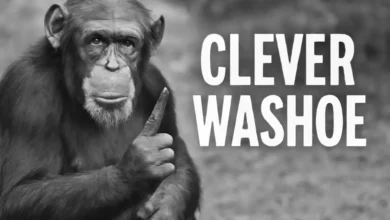The Mante Tribe: An In-Depth Exploration of a Unique Cultural Heritage

The Mante tribe, often shrouded in mystery and rich in history, represents a fascinating and lesser-known group with a profound cultural heritage. Originating from the vast regions of West Africa, particularly Liberia and parts of Sierra Leone, the Mante tribe’s unique social structure, traditions, and lifestyle have captivated researchers, anthropologists, and visitors alike. This article delves into the history, culture, and traditions of the Mante tribe, offering a comprehensive look at their fascinating way of life.
Origins and History of the Mante Tribe
The Mante tribe’s origins can be traced back to the western coastal regions of Africa, with a significant presence in Liberia and Sierra Leone. While specific details about their earliest migration patterns remain obscure, the tribe has been part of the region’s history for centuries. The Mante people belong to the larger Mande group, which is one of the oldest and most influential cultural groups in West Africa.
Through a combination of oral tradition and archaeological findings, it is believed that the Mante people migrated from the ancient Mali Empire, a powerful civilization known for its wealth, military prowess, and influence over trade routes across the Sahara Desert. The tribe eventually settled in the lush, tropical rainforests of the region, where they developed a distinctive language, customs, and social organization.
Language: The Heart of Mante Identity
One of the most significant aspects of Mante culture is their language, which is part of the larger Mande language family. The Mante tribe language, also known as Mantenka, serves not only as a tool of communication but also as a vital part of their identity. The language is spoken in various dialects, reflecting the tribe’s geographic spread. Despite the growing influence of colonial languages such as English, the Mante tribe people continue to speak their native tongue with pride.
Language is closely intertwined with the tribe’s oral traditions, which include storytelling, songs, and proverbs passed down through generations. These oral histories help preserve the tribe’s cultural values, myths, and legends, creating a deep sense of continuity and connection with their ancestors.
Social Structure and Governance
The Mante tribe follows a chiefdom-based system of governance. This means that their society is led by a chief, who is regarded as the most authoritative figure within the community. The chief is responsible for making key decisions, settling disputes, and ensuring the welfare of the tribe members.
In addition to the chief, the tribe also has a council of elders. These wise and respected individuals hold significant sway in decision-making processes and are revered for their knowledge and experience. The elders play a crucial role in maintaining harmony within the community and preserving the tribe’s traditions.
While the chief holds ultimate power, Mante society is inherently egalitarian, with a significant focus on communal living. Extended families often live together in large, multi-generational households, and their interconnectedness fosters a deep sense of solidarity and mutual support.
Religion and Spiritual Beliefs
Religion plays a central role in the life of the Mante tribe people, who practice a traditional belief system intertwined with elements of animism. They believe that spirits of nature—such as those residing in trees, rivers, and mountains—play an important role in daily life. The Mante also practice ancestor worship, offering prayers and sacrifices to honor their forebears, who they believe continue to influence the world of the living.
Rituals and ceremonies are integral to their religious practices, with special ceremonies held during important life events such as births, marriages, and deaths. The tribe also celebrates various seasonal festivals, which are often marked by music, dance, and feasting.
Over time, some Mante tribe people have incorporated Christianity and Islam into their spiritual practices due to the influence of missionaries and neighboring Islamic communities. However, traditional practices remain strong in the tribe, blending with the newer beliefs to form a unique spiritual identity.
Traditional Clothing and Adornments
Traditional Mante tribe clothing reflects the tribe’s deep connection with nature and their surroundings. The Mante tribe people are known for wearing brightly colored garments, often made from locally sourced fabrics like cotton. Handwoven cloth, decorated with intricate patterns, is a staple in their wardrobes, with designs representing different aspects of their life and spirituality.
Men typically wear loose-fitting tunics and trousers, while women often wear wrap-around skirts and blouses. Jewelry and adornments, such as beaded necklaces and earrings, are important for both men and women and are worn during ceremonial events.
Adornment extends beyond clothing, as the Mante people are known for their elaborate scarification rituals, where patterns are etched into the skin to mark significant milestones in a person’s life. These marks serve as symbols of courage, beauty, and social status within the community.
Food and Agriculture
The Mante Tribe people rely heavily on subsistence farming for their livelihood, with rice, cassava, and plantains being staple crops. The fertile land of their homelands allows them to cultivate a wide variety of foods, ensuring the community’s dietary needs are met.
In addition to farming, hunting and fishing are also significant sources of sustenance for the Mante people. They fish in rivers and lakes using traditional methods and hunt animals in the surrounding forests, including wild boar, antelope, and smaller game. The tribe has developed sustainable techniques that ensure the preservation of their environment and natural resources.
Food is also a central part of the tribe’s social gatherings. Shared meals during ceremonies, weddings, and other special events foster a sense of unity and allow the tribe to celebrate their shared cultural identity.
Music, Dance, and Art
Music and dance are essential to Mante culture, with both forms of expression being integral to nearly every aspect of their lives. The tribe is known for their drumming traditions, with intricate rhythms played on handmade drums being a hallmark of their performances. Dance accompanies the music, with movements often representing the tribe’s connection to the spiritual world.
Mante art is not only a form of decoration but also a way of conveying deeper meanings. The intricate wood carvings, which adorn their homes and ceremonial objects, often depict mythical figures and ancestral spirits. These artworks play a role in religious practices, as they are believed to possess spiritual power.
Challenges and Modern-Day Life
Like many indigenous tribes, the Mante Tribe people face challenges in the modern world. The influence of Western education, globalization, and political instability in their region has made it increasingly difficult to preserve their traditional way of life. Additionally, modern farming techniques and access to better healthcare have altered their agricultural practices and lifestyle.
Despite these challenges, the Mante tribe continues to thrive by maintaining a delicate balance between preserving their cultural heritage and adapting to contemporary realities. Efforts to document and protect their language, customs, and history are being made by both local and international organizations, ensuring that the tribe’s unique legacy endures for generations to come.
Conclusion
The Mante tribe, with its rich history, vibrant culture, and profound connection to the land, represents a testament to the resilience of indigenous communities. While the tribe faces modern challenges, its cultural identity remains a source of strength and pride. Through their language, social structures, spirituality, and traditions, the Mante Tribe people continue to hold onto their unique place in the world, making them an important part of the cultural mosaic of West Africa.




